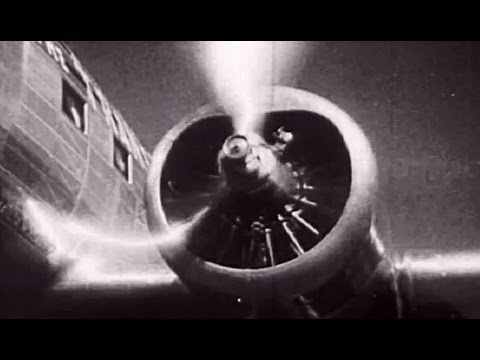more at
“Produced to convince Depression-weary Americans that new frontiers still lay ahead. Excellent compilation of stock shots of 1930s-era manufacturing, research laboratories and industry.”
NEW VERSION with improved video & sound:
Public domain film from the Prelinger Archive, slightly cropped to remove uneven edges, with the aspect ratio corrected, and mild video noise reduction applied.
The soundtrack was also processed with volume normalization, noise reduction, clipping reduction, and/or equalization (the resulting sound, though not perfect, is far less noisy than the original).
The term R&D or research and development (or RnD especially in domain names; or Research and Technical Development; or Research and Technological Development or RTD in Europe) refers to a specific group of activities within a business. The activities that are classified as R&D differ from company to company, but there are two primary models. In one model, the primary function of an R&D group is to develop new products; in the other model, the primary function of an R&D group is to discover and create new knowledge about scientific and technological topics for the purpose of uncovering and enabling development of valuable new products, processes, and services. Under both models, R&D differs from the vast majority of a company’s activities which are intended to yield nearly immediate profit or immediate improvements in operations and involve little uncertainty as to the return on investment (ROI). The first model of R&D is generally staffed by engineers while the second model may be staffed with industrial scientists. R&D activities are carried out by corporate or governmental entities…
Background
New product design and development is more often than not a crucial factor in the survival of a company. In an industry that is changing fast, firms must continually revise their design and range of products. This is necessary due to continuous technology change and development as well as other competitors and the changing preference of customers. Without an R&D program, a firm must rely on strategic alliances, acquisitions, and networks to tap into the innovations of others…
In general, R&D activities are conducted by specialized units or centers belonging to a company, or can be out-sourced to a contract research organization, universities, or state agencies. In the context of commerce, “research and development” normally refers to future-oriented, longer-term activities in science or technology, using similar techniques to scientific research but directed toward desired outcomes and with broad forecasts of commercial yield.
Statistics on organizations devoted to “R&D” may express the state of an industry, the degree of competition or the lure of progress. Some common measures include: budgets, numbers of patents or on rates of peer-reviewed publications. Bank ratios are one of the best measures, because they are continuously maintained, public and reflect risk.
In the U.S., a typical ratio of research and development for an industrial company is about 3.5% of revenues. A high technology company such as a computer manufacturer might spend 7%. Although Allergan (a biotech company) tops the spending table with 43.4% investment, anything over 15% is remarkable and usually gains a reputation for being a high technology company. Companies in this category include pharmaceutical companies such as Merck & Co. (14.1%) or Novartis (15.1%), and engineering companies like Ericsson (24.9%).[1] Such companies are often seen as credit risks because their spending ratios are so unusual.
Generally such firms prosper only in markets whose customers have extreme needs, such as medicine, scientific instruments, safety-critical mechanisms (aircraft) or high technology military armaments. The extreme needs justify the high risk of failure and consequently high gross margins from 60% to 90% of revenues. That is, gross profits will be as much as 90% of the sales cost, with manufacturing costing only 10% of the product price, because so many individual projects yield no exploitable product. Most industrial companies get only 40% revenues.
On a technical level, high tech organizations explore ways to re-purpose and repackage advanced technologies as a way of amortizing the high overhead. They often reuse advanced manufacturing processes, expensive safety certifications, specialized embedded software, computer-aided design software, electronic designs and mechanical subsystems.
Research has shown that firms with a persistent R&D strategy outperform those with an irregular or no R&D investment programme…

